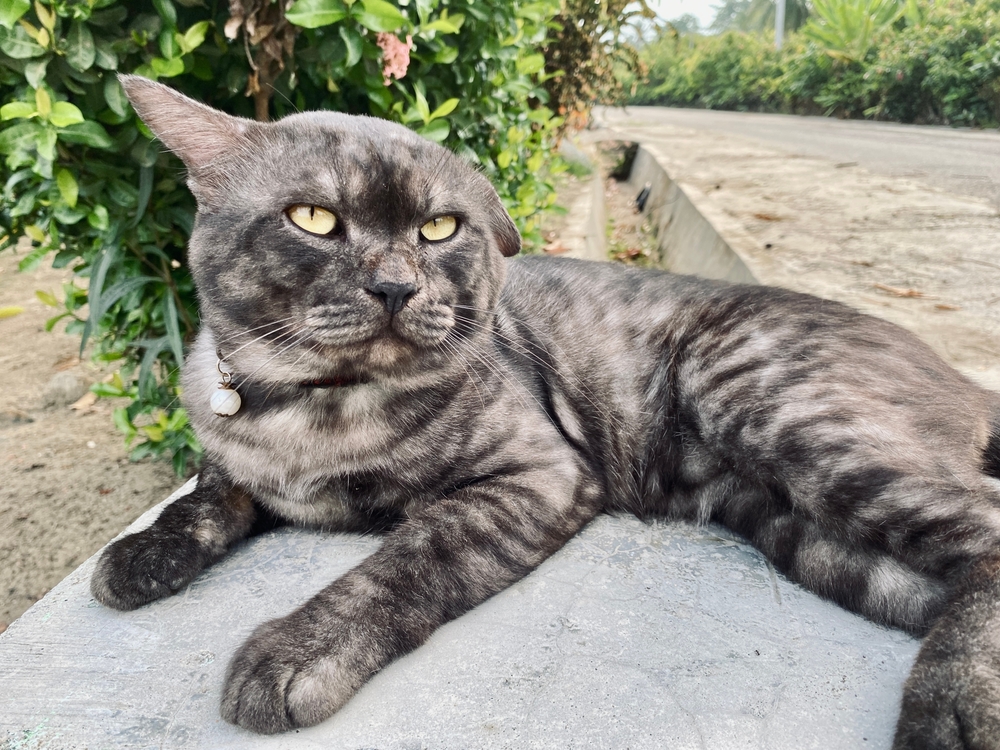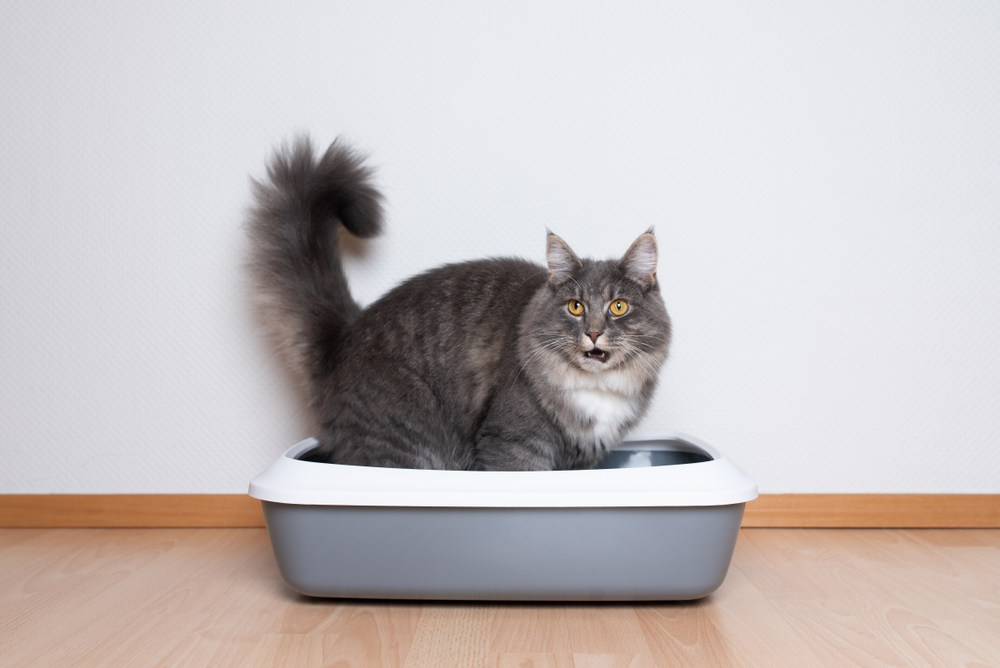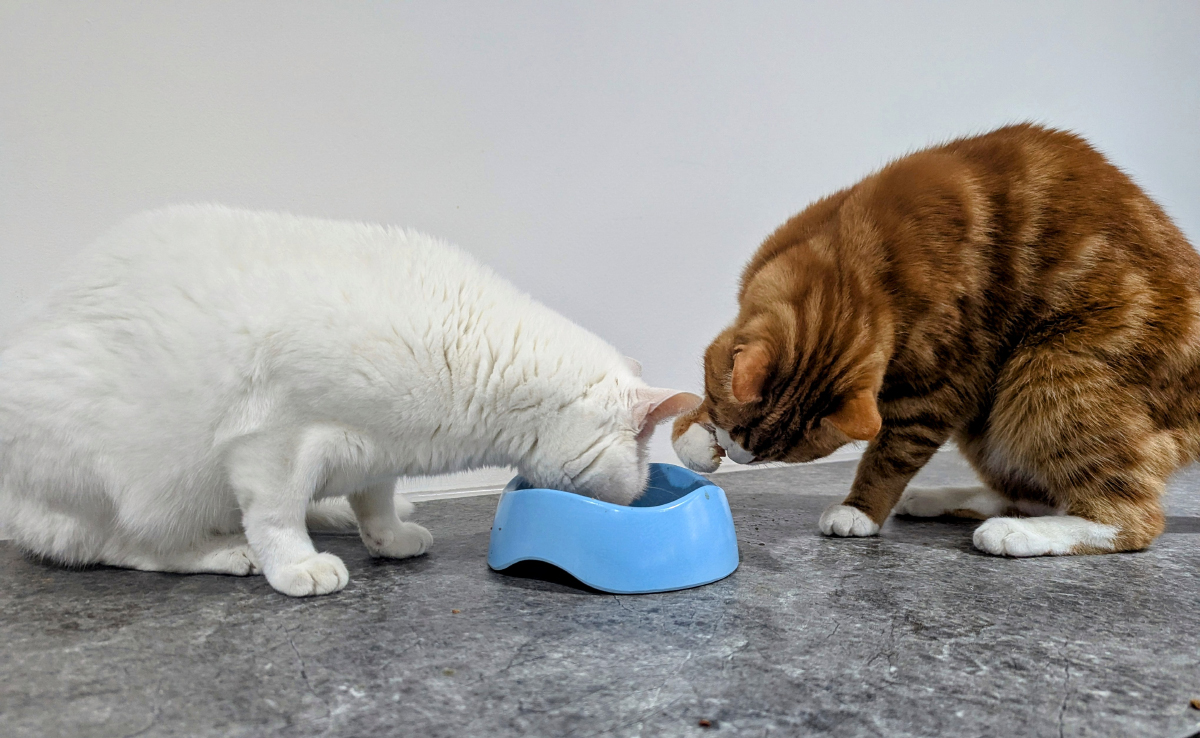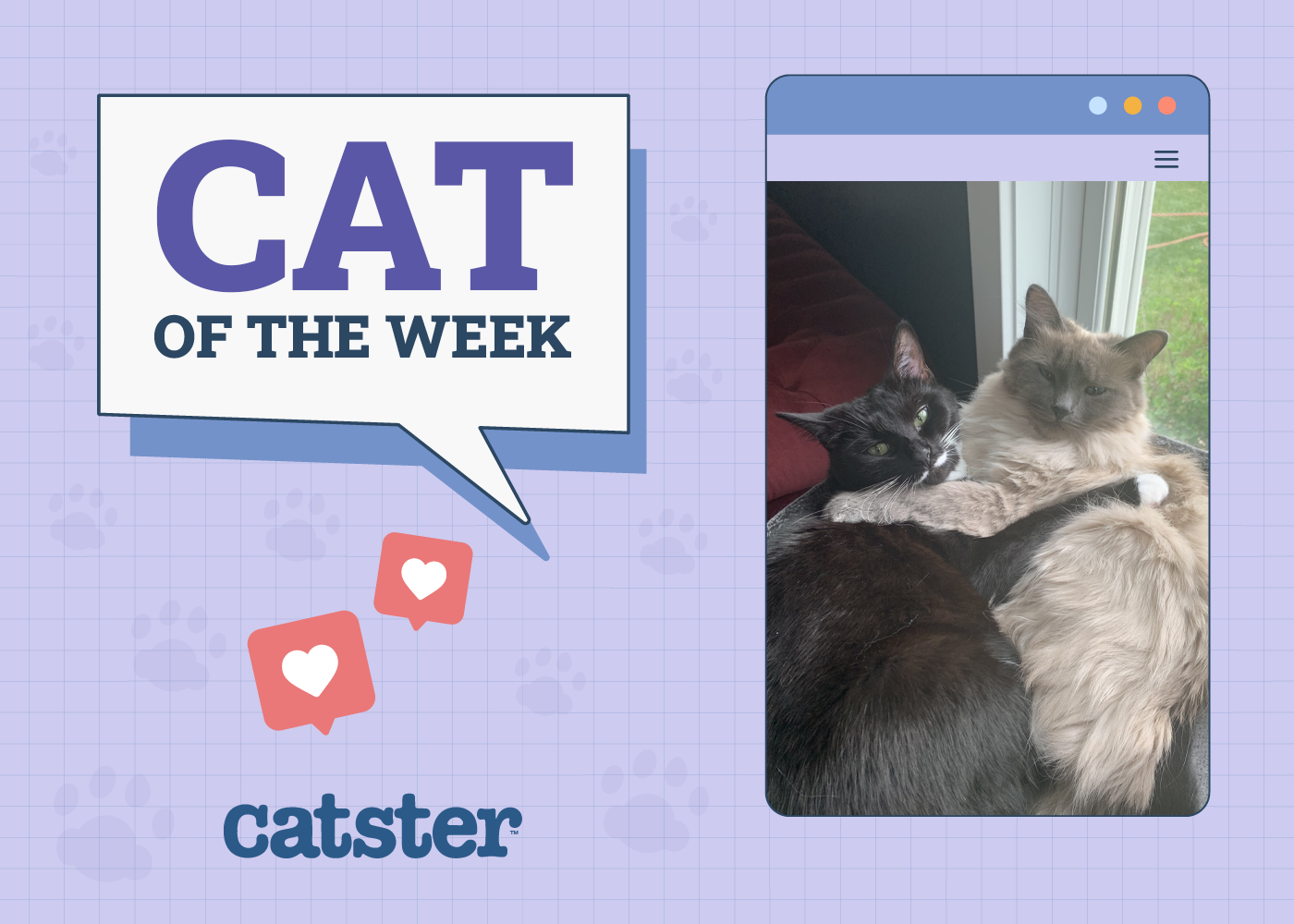Click to Skip Ahead
Did you know that, unlike dogs, there’s only one breed of cat with ears that aren’t fully upright? That’s right, and those are Scottish Folds. Since all cats have consistent ear positions, seeing a folded, drooping, or floppy-eared cat can be startling. We can teach you all about what a drooping cat ear might look like, why that might be happening, and what you can do about it.

What Are Drooping Ears in Cats?
The pinna of the ear, which is the external, thin part of the ear outside of the canal that protrudes from the skull, is lowered in an abnormal position.
Sometimes the ear has drooped down on its own, or maybe the cat has tensed the ear into a tighter, flat position for various reasons. Since Scottish Folds are the only cats whose ear pinna position isn’t upright, for any other cat, if you see the pinna lower than usual, this would be a drooping ear.
If you need to speak with a vet but can't get to one, head over to PangoVet. It's an online service where you can talk to a vet online and get the personalized advice you need for your pet — all at an affordable price!
What Are the Signs of Drooping Ears in Cats?
You may see the following signs associated with one or both of your cat’s ears:
- Limp, folded ear pinna
- Tense, flattened ear pinna
- Swollen ear pinna
- Head shaking
- Scratching the ear(s)
- Dirty ear canals
- Hair loss on the pinna
- Scabs, scratches, or flaking skin of the ear pinna
- Red, inflamed ear pinnae
- Ear pinna is painful to the touch
- Odor or discharge from the ear
- Lumps or bumps on the ear pinna or in the ear canal
- A lazy eye, drooping mouth, or drooping whiskers on the same side as the drooping ear
- Deafness
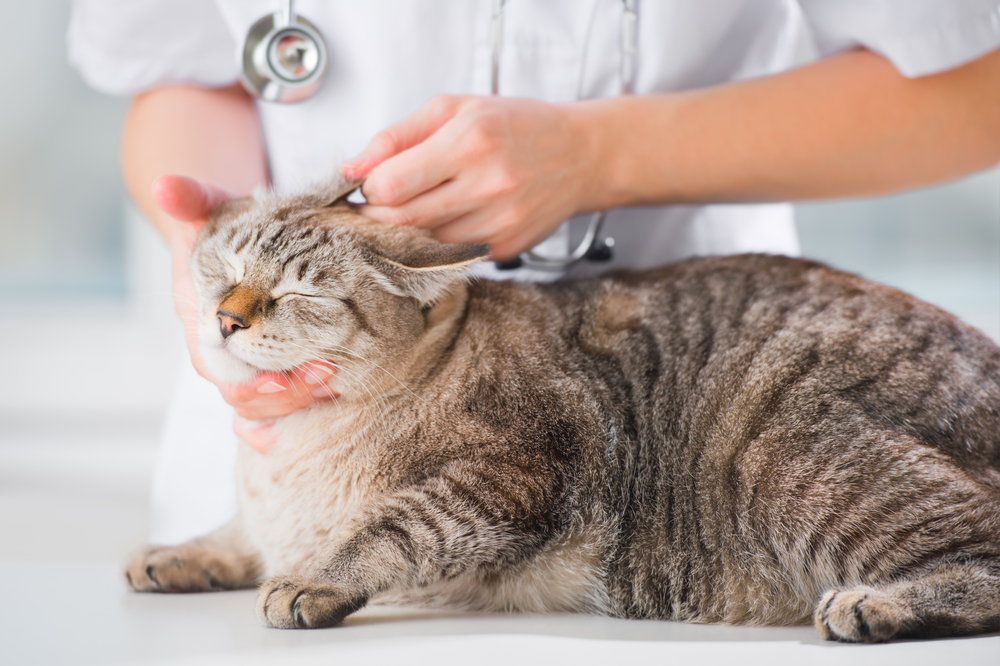
What Are the Causes of Drooping Ears in Cats?
1. Otitis Externa
A cat with droopy ears could be caused by otitis externa, which means an infection of the external ear canal. These can be painful or itchy and can lead to a limp ear pinna or your kitty guarding or tensing their ear due to the discomfort. Bacteria or yeast can cause these infections, and the underlying reason for ear infections in cats is often allergies.
2. Aural Hematoma
Aural hematomas are swollen ear pinnae full of blood (not that you’ll see any external bleeding!). This is caused by trauma, typically from scratching, head shaking, or fights. The trauma causes blood vessels inside the ear pinna to rupture, and the area will form a pocket of blood on the inside. These can be painful to the touch, and the weight of the swollen pinna can cause floppy cat ears.
3. Parasites
The most common ear parasite of cats are ear mites. These are usually very itchy and can quickly cause an ear to get scratched, form a hematoma, get infected, and will often be at least intermittently seen flattened or drooped. Another parasite of cats that can cause ear drooping is Toxoplasmosis, which can lead to death and loss of the ear pinna entirely in extreme cases.
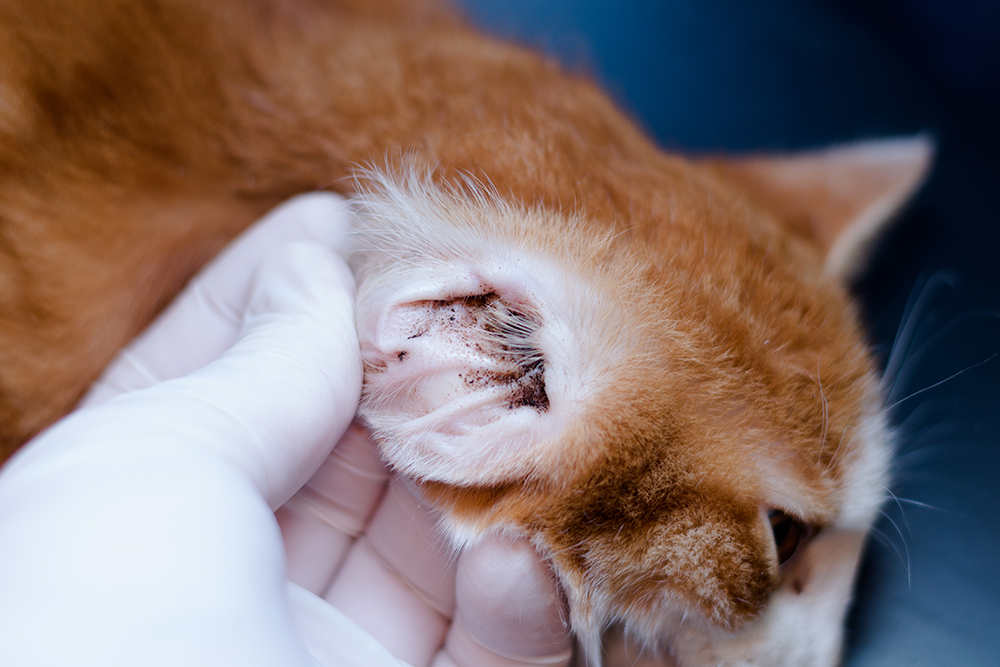
4. Frostbite
The tips of a cat’s ears are very thin and often have little hair. This spot is particularly prone to frostbite, in which the first sign of damage or death of the ear tip may be drooping.
5. Vasculitis
Vasculitis means inflammation of blood vessels. There are lots of ways this can happen, but since the blood vessels of the ears are so tiny, it is a spot where inflammation of the blood vessels can cause damage that leaves the ear drooping due to lack of blood flow.
6. Ringworm
This fungal infection is particularly common in shelter cats and can leave ears hairless, itchy, and resting in abnormal positions.
7. Cancer
Tumors of the ear pinna or even the ear canal can lead to drooping or weighing down of the ear, and depending on the size and location of the tumor, this might be the first sign of a problem that you notice.
8. Facial Nerve Paralysis
This can happen for several reasons, one of which is trauma, but damage to the nerves that run to the ear can leave it drooping instead of upright. You would also usually notice a drooping or limpness to other parts of their face in this area, like the skin, eye, third eyelid, whiskers, and/or mouth on the same side of the face. One side should be affected rather than both.
9. Foreign Body
If something gets stuck in your cat’s ear pinna or the canal, they will almost certainly have a drooped ear. This, too, may be painful, and you may or may not be able to see the stuck object. Common culprits would be grass awns/foxtails.
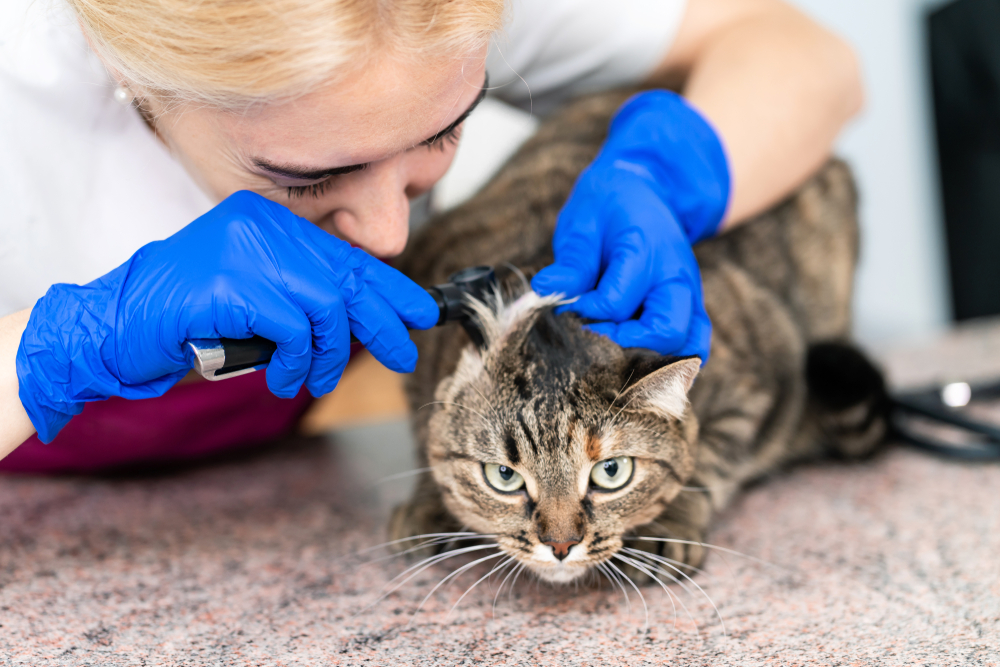

How Do I Care for a Cat With Drooping Ears?
Caring for a cat with drooping ears depends entirely on what has caused it to droop. The first thing you’ll want to do is call your veterinarian to let them know what’s going on with your kitty. When they examine them, they will try to narrow down the cause so that they can treat them.
- Ear cytology—looking at a swabbed sample from the ear under a microscope to screen for infections
- Skin scrape—checking skin cells scratched off the surface of the ear and placed on a slide for parasites under a microscope
- Otoscopic exam—using a scope to look inside the ear canal
- Culture—allowing samples to grow bacteria or ringworm for identification
- Bloodwork—some conditions are better identified by looking at a cat’s blood rather than the ear itself
- Biopsy—removing a small piece of the ear (or other tissue) to test for certain diseases or conditions
- Surgery—it may not be possible to diagnose a specific growth on an ear until it is removed in surgery and sent to the lab for identification
In most cases, droopy cat ears can return to normal after treatment. You may need to apply ear drops or creams or give oral medications to care for their ear at home. In most cases, these medications are given for a set period but it is possible they may need lifelong treatment. Even though most cats hate them, it is likely your cat will be sent home in an e-collar to protect the ear. You want to keep their ears clean and undisturbed to help with healing.
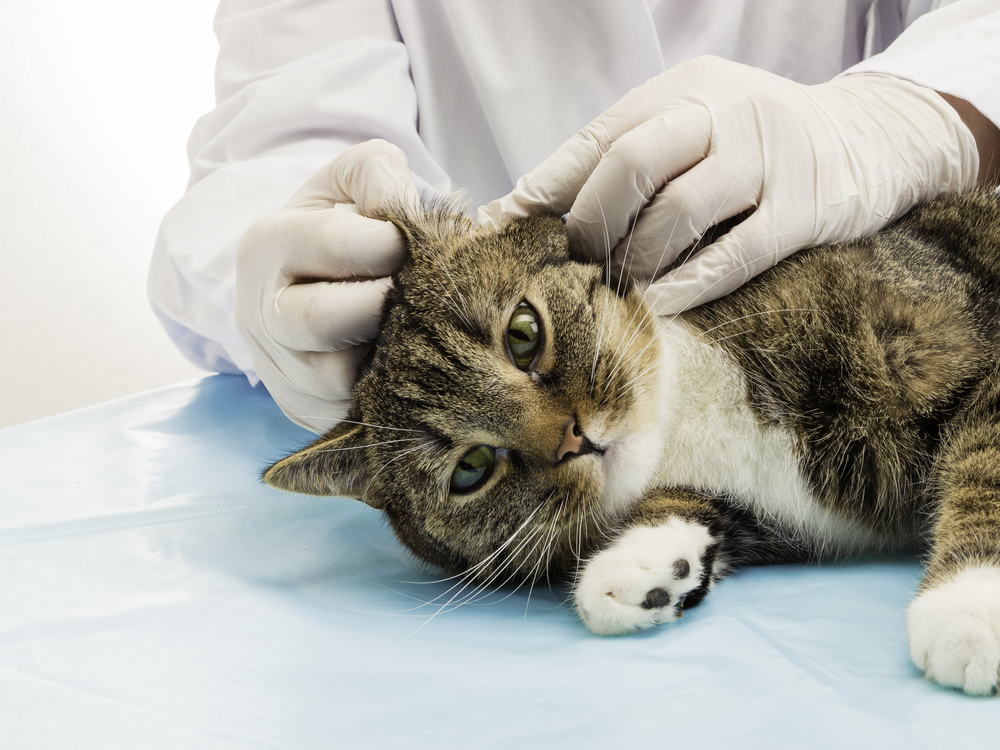

Frequently Asked Questions
Do you have to treat drooped ears in cats?
Since cat’s ears are always drooped because something is wrong (unless they’re a Scottish Fold), they will need to be treated; otherwise, the issue will only get worse. In worst-case scenarios, the problem can spread to other parts of the body, or the tips of their ears can even fall off!
Are drooping ears in cats contagious?
Some, but not all, causes of drooped ears in cats are contagious. Ear mites and ringworm are both highly contagious between cats, and ringworm can spread to people too, which is why it is best to bring your cat straight to the vet if you notice a drooped ear.
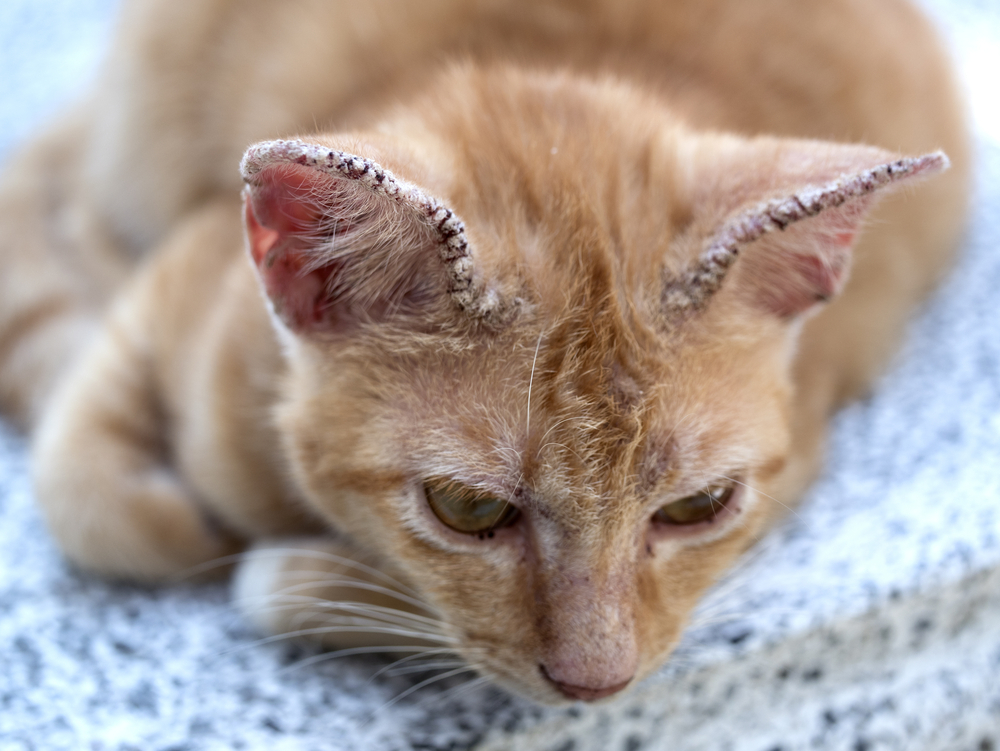

Conclusion
If a cat’s ears are drooping, this almost always means something is wrong. Do not attempt to treat this from home; instead, contact your veterinarian so they can find out why the drooping has happened, and then they will make a plan to help. Being given medication to give your cat at home is common, and while treatment is usually only a couple weeks long, your cat may need treatment up to their whole life, depending on the underlying problem.
Some causes of ear drooping in cats are uncomfortable, but others your cat may not notice at all. Getting quick treatment is the best way to help them, so don’t doubt yourself if you think your cat’s ear is just a little off!
See also:
- Ear Cancer in Cats: Causes, Signs & Care (Vet Answer)
- Why Do Cats Move Their Ears? Vet-Reviewed Science & Meanings Explained
Featured Image Credit: moorchkoona, Shutterstock

